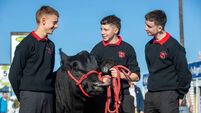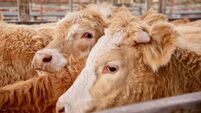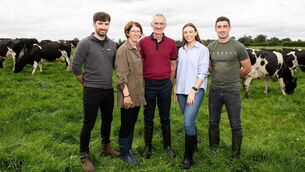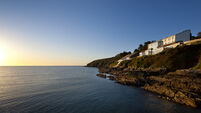Fair to celebrate the Connemara Pony
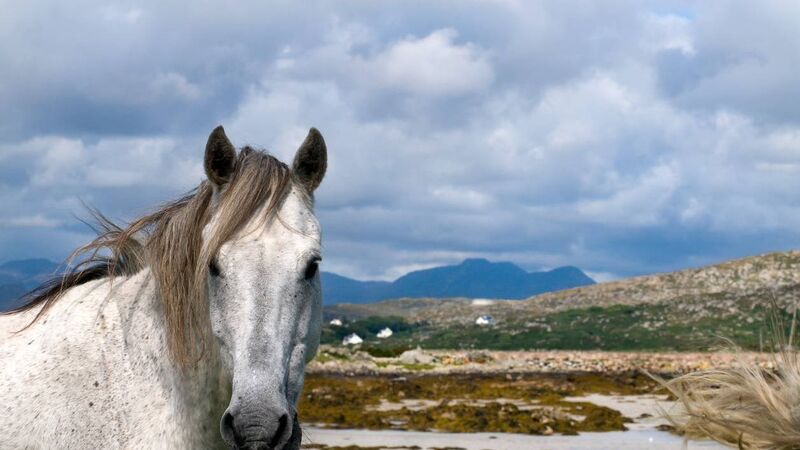
Legend also has it that when the Spanish Armada sank off the west coast, the horses on board swam to shore and bred with the native ponies running wild in the mountains, writes Ray Ryan.
A search on Google for the iconic Connemara Pony breed will yield about 6.3 million results in 35 seconds.
That is just one indication of the global popularity of Ireland’s only native pony breed, whose origins go back some 2,500 years to the pre-Christian era when there was no such thing as surfing the net.
Legend also has it that when the Spanish Armada sank off the west coast, the horses on board swam to shore and bred with the native ponies running wild in the mountains.
That's part of the heritage of the celebrated Connemara Pony, which continues to play a crucial role in the lives of people in the west of Ireland.
Often in the past, a farmer could only afford one good pony. She would pull a plough or a cart from dawn to dusk at whatever task was needed under extremely hard conditions.
She carried heavy loads, pulled ploughs, moved rocks to reclaim the land, seaweed to fertilise the barren ground and helped to bring turf home from the bogs.
Prized traits of hardiness, agility, gentleness, intelligence, stamina, and natural jumping ability, developed over the centuries in the rugged terrain.
These later led to the breed being much sought after for show jumping, eventing and dressage competitions worldwide and for the leisure sector.
A series of events to mark the centenary of the Connemara Pony Breeders Society (CPBS) headed by Dave Sheedy, president, and the contribution the breed has made to the region’s economy, is being held this year.
Michael J O’Malley, a founding CPBS member, who was instrumental in promoting and preserving the breed, has already been honoured in his home place of Rosmuc, Co. Galway.
He set off from the village in 1912, accompanied by Joe Walsh, leading a four-year-old grey stallion ‘Irish Dragoon’ and a six-year-old cream mare ‘Eileen Alanna’. They travelled to London on foot, train, and boat.
The purpose of the journey, calculated today at 870 kms, was to present the Connemara breed at one of the most prestigious equestrian events in Britain - ‘The Parade of Types of British and Continental Horses and Ponies’ - held at Olympia.
That adventure led twelve years later to the formation of the CPBS at a meeting held in Oughterard under the auspices of Galway County Committee of Agriculture and the Department of Lands and Agriculture.
Promoting the breed and maintaining a stud book were the Society’s aims. Volume 1 of the Stud Book was published in 1926. It now fills twenty-one volumes in hardback and digital.
Today, the CPBS has 17 daughter societies in countries across the world, with the Czech Republic the latest addition to the list.
A brochure published for the centenary describes the Connemara Pony breed as the product of its environment with distinct and sturdy physical qualities.
These have evolved over generations on the extremely harsh and rocky seacoast, exposed to fierce storms and seemingly never-ending wet weather.
Connemara ponies learned to eat whatever the land offered – heather, gorse, seaweed, scant grass.
This made for a varied diet that all the conditions in the world could not equal, and resulted in a self-reliant animal that could fend for itself.
It became a breed that developed magnificent bone and rock-hard hooves. It was nimble and surefooted.
And the population of the area recognised the pony’s potential to work the land, transport peat, carry produce to market and the family to the chapel.
It was invaluable to the needs and requirements of the local people, becoming a tough and willing type that became very popular in the modern equine community.
Clifden will be the venue for the Connemara Pony Festival, which begins next Tuesday, with the show itself taking place on Thursday, Friday and Saturday.
It will showcase the breed with 45 competitions and increased prize money in numerous of classes sponsored by Horse Sport Ireland.
Connemara pony enthusiasts and breeders from around the world will share stories and exchange knowledge about the breed.
Thursday is traditionally the high point of the festivities, with both ridden and working hunter classes that demonstrate the breed’s capabilities.
High performance and puissance classes will feature on Friday when there will also be a parade through the streets.
Connemara Pony Sales, based in Clifden, hold four sales annually in February, May, August, and October.
Due to demand, the August sales, normally held over two days, have been extended to three days this year (August 18-20). Horse and pony buyers and sellers from around the globe will attend.
Trade at the May sales showed that the demand for Connemara Ponies continues to get stronger. There was an entry of 634 and a 64% clearance.
The top price of €15,800 was paid for a 10-year-old gelding while 10 others went for five-figure sums. A total of 115 ponies went to new homes overseas with 75 going to Britain.


